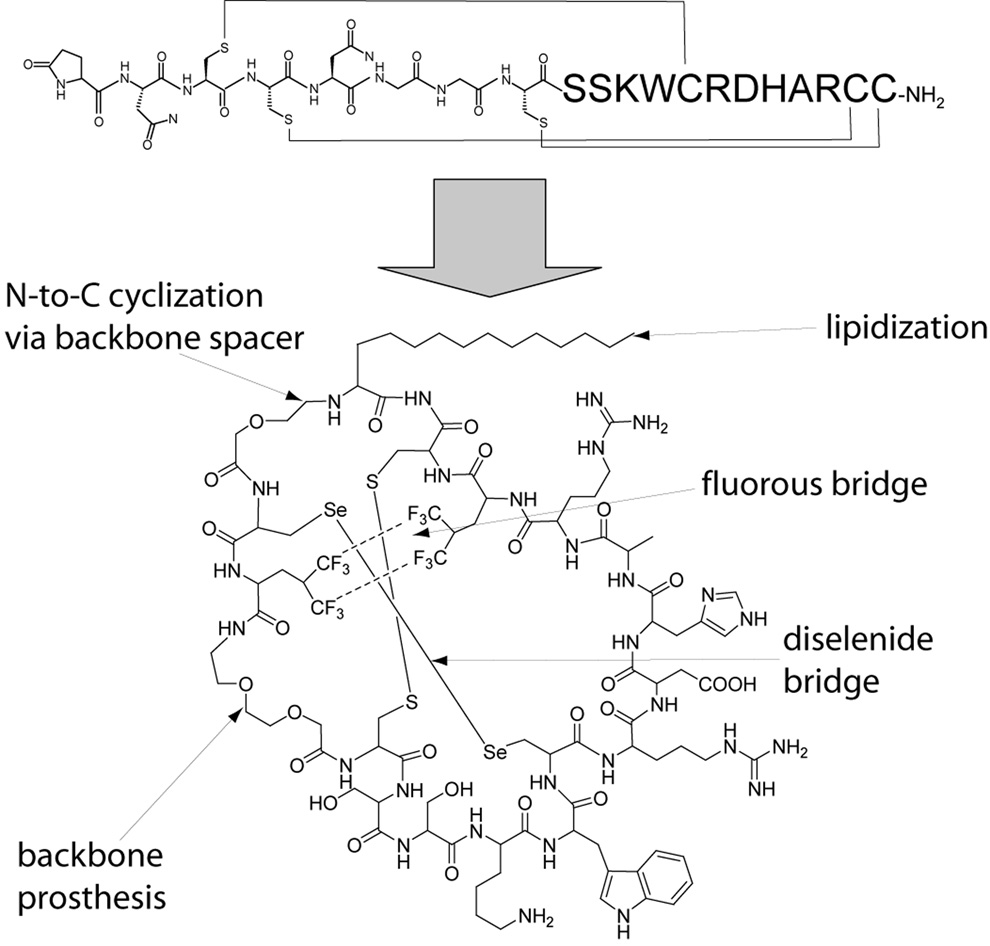Figure 3.
Prototype conotoxin-based drug exhibiting oral bioavailability and simplified oxidative folding properties. Upper structure represents unmodified µ-conotoxin SIIIA, which is a blocker of neuronal sodium channels and a potent analgesic compound following systemic administration [42]. Lower structure represents a hypothetical polytide analog of µ-SIIIA [42] in which the N-terminal backbone spacer is coupled to both a lipoamino acid and the C-terminus. This lipidized and N-to-C cyclized analog should exhibit improved oral bioavailability. To simplify the oxidative folding of such an non-natural analog, two of the native disulfide bridges are replaced by a diselenide bridge and a “non-covalent crosslink” via fluorous hydrophobic-bonding interaction.

